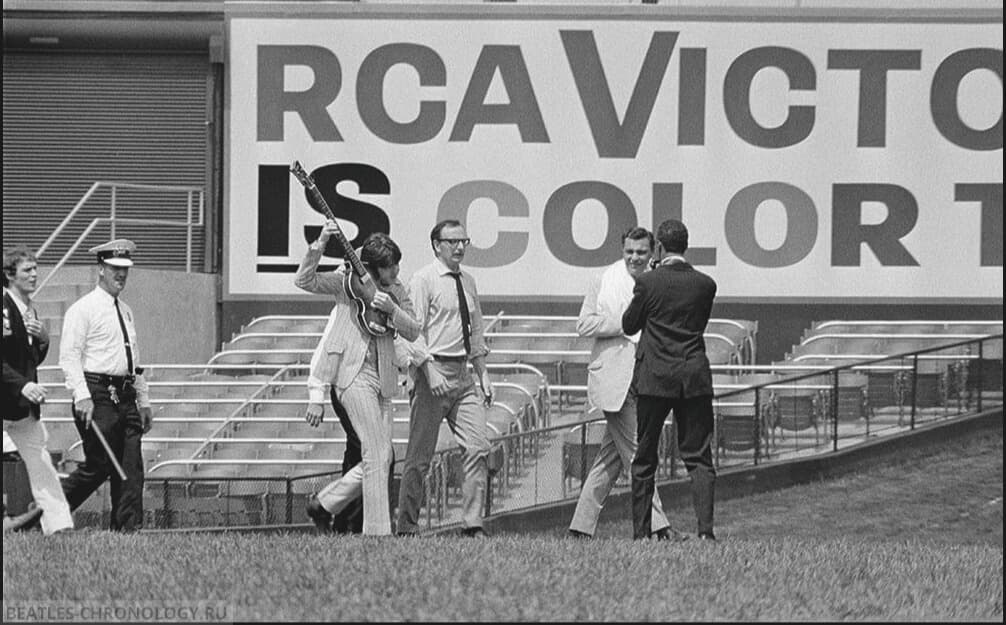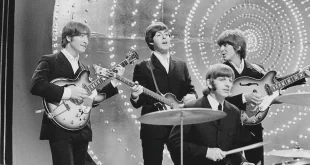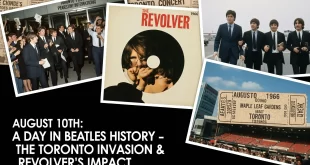The Beatles’ story is a patchwork of unforgettable concerts, studio sessions, personal travels, and solo ventures. On August 21, across different years of the 1960s through the 1990s, the Fab Four left their mark on music history in very different ways. From marathon studio work at Abbey Road to stadium-shaking concerts in America, this date highlights how rapidly their career evolved.
🎙️ 1963 – The Studio Years Begin to Intensify
By the summer of 1963, Beatlemania was starting to brew in the UK, and The Beatles were already back in EMI’s Abbey Road Studios working tirelessly. On this day, inside Studio 3, George Martin, Norman Smith, and a very young Geoff Emerick were busy editing and mixing tracks that would eventually land on their upcoming album With the Beatles.
Among the songs worked on were:
- Money (That’s What I Want)
- You Really Got a Hold On Me
- Roll Over Beethoven
- It Won’t Be Long
- All My Loving
This was also the 22nd consecutive week that their debut album Please Please Me was sitting in the UK Top 10, a remarkable feat for a band that just a year earlier was virtually unknown outside Liverpool.
Later that evening, the group performed at the Gaumont Theatre in Bournemouth, sharing the bill with Billy J. Kramer and Tommy Quickly – part of Brian Epstein’s “stable” of artists. These were still relatively modest theatre shows, but the screaming from fans was growing louder by the week.
🎸 1964 – Beatlemania in Full Swing
By 1964, everything had changed. The Beatles were no longer a British sensation; they were a global phenomenon. On August 21, they played a concert at the Coliseum in Seattle, drawing tens of thousands of fans.
This was their first-ever visit to the city, and like everywhere else in America, the reception was deafening. Newspapers at the time reported that the noise level at the Coliseum was “like standing next to a jet engine.” The Fab Four were riding the wave of their first films, chart-topping singles, and nonstop touring – a lifestyle that, within just two years, would begin to wear them down.
🏟️ 1965 – Minneapolis Stadium Show
On this day in 1965, The Beatles continued their second U.S. tour with a performance at the Metropolitan Stadium in Minneapolis, the then-home of the Minnesota Twins baseball team. A press conference preceded the show, as was now customary – the band fielded endless questions about everything from haircuts to religion to touring exhaustion.
Despite the chaos, the concerts were massive successes, proving that even in open-air stadiums, The Beatles could command audiences like no other act. This concert tour would eventually inspire the idea of “stadium rock” that bands like Led Zeppelin, The Rolling Stones, and later U2 would take to another level.
🌧️ 1966 – St. Louis, Busch Stadium
By 1966, cracks were beginning to show. The Beatles performed at Busch Stadium in St. Louis, but rain poured down on the uncovered stage. The band, using primitive sound systems by today’s standards, struggled through the show.
Years later, Paul McCartney would recall the night vividly: “We were standing there with the rain pouring down, and none of the electrical equipment was covered. We just thought, ‘This has got to be the end.’” Within weeks, the band would announce that their touring days were over – making St. Louis one of the final U.S. cities to witness a live Beatles concert.
🎹 1968 – George Returns from Greece, Abbey Road All-Nighter
George Harrison returned from a holiday in Greece and joined the others at Abbey Road. The focus of the session was Sexy Sadie, a track written by John Lennon after his disillusionment with Maharishi Mahesh Yogi. Recording stretched overnight from 7:30 pm to 7:15 am – a typical example of the Beatles’ late-’60s work ethic.
The complexity of overdubs and reductions showed how far the band had come since their simple two-track recordings of 1963. Under George Martin’s guidance, assisted by engineers Ken Scott and John Smith, The Beatles were crafting the sonic experiments that would define The White Album.

🎼 1969 – Abbey Road Magic
Work on Abbey Road was reaching its climax. On this day, the engineers pieced together elements of “The End”, the final track recorded collectively by all four Beatles. Stereo crossfades were also created for You Never Give Me Your Money into Sun King and Mean Mr. Mustard.
Producer George Martin and engineers Geoff Emerick, Phil McDonald, and Alan Parsons were overseeing what would become The Beatles’ last studio masterpiece. Listening today, those seamless transitions remain some of the most iconic in rock history.
🖼️ 1971 – John & Yoko at Alexandra Palace
Away from The Beatles as a group, John Lennon and Yoko Ono showcased their avant-garde films at London’s Alexandra Palace, as part of the Art Spectrum exhibition. Five of their pieces, including Give Peace a Chance and Cold Turkey, were screened – further proof of Lennon’s move into the world of experimental art and activism.
📀 1982 – Paul’s “Take It Away” Climbs the Charts
Nearly two decades after those early Abbey Road sessions, Paul McCartney was still topping charts. His single “Take It Away”, from the album Tug of War, reached #15 in the UK and #10 in the U.S. on this day. The track featured contributions from George Martin once again, creating a neat full-circle moment between Paul’s solo career and his Beatles past.
🥁 1998 – Ringo Rocks London
Ringo Starr, meanwhile, was enjoying a career renaissance in the 1990s with his All Starr Band tours. On August 21, 1998, he performed at Shepherd’s Bush Empire in London, fronting his group of rotating rock legends. These shows reminded audiences worldwide of Ringo’s charm and rhythmic power, proving that all four Beatles maintained a unique connection with fans well into later decades.
🎤 Beatles Quote of the Day
“It’s typical, the one time I don’t show up I win a Grammy, maybe that’s the secret formula!”
— Paul McCartney
✨ Conclusion
August 21 in Beatles history highlights the sheer scope of their journey: from young men sweating over edits in Abbey Road to conquering stadiums, experimenting with sound, exploring avant-garde art, and enjoying solo triumphs decades later. Every year brought a new chapter, but all threads point back to The Beatles’ relentless creativity and their enduring impact on music and culture.





